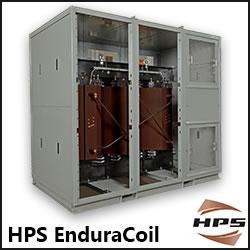Black & Veatch Report: Some Retiring Power Plants May Not Need to be Replaced
Distributed Generation and New Technologies Are Improving Energy Efficiency, Reducing Need to Replace Generation Capacity
WASHINGTON, Aug. 12, 2014 -- Black & Veatch's 8th annual
nuclear and coal power plants may not need to be replaced on a
megawatt-to-megawatt basis. New technologies and distributed generation
(DG), coupled with soft energy demand growth, enable utilities to replace
retiring plants with ones that produce less energy.
"This year's Strategic Directions: U.S. Electric Industry report finds many
utilities at a crossroads," said Dean Oskvig, president of Black & Veatch's
energy business. "The influx of new technologies, new energy sources and new
generation approaches, create immense challenges and opportunities for
utilities. What has not and will not change, however, is the mandate to
deliver the 'always on' reliable electric service the industry has provided
for more than 100 years."
The Black & Veatch report found that the rise of DG in particular creates
unique challenges for utilities. DG requires rapid changes to the power grid
in order to integrate new assets and resources.
Utilities must also be able to ramp up capacity to account for varying
renewable energy output. Where DG reduces demand, utilities will have to
revisit their current revenue structure in order to ensure continued
reliable service.
"Every kilowatt that is now being produced by a third party or a consumer is
a kilowatt not being sold by the utility," said John Chevrette, president of
Black & Veatch's management consulting business. "At the same time,
utilities still carry the burden of building, maintaining and operating the
bulk of the power delivery system. Given the high cost of maintaining these
assets, we expect to see more utilities making the case with regulators to
adjust their business models."
The report also found that concern for cyber and physical security is
growing. Today, cyber security is among the top five industry issues, as
ranked by utility survey participants. Cyber security did not make the
industry top 10 list as recently as 2012.
Based on data collected by industry professionals across the United States,
the report tracks utility leaders' views on a range of major issues. Some
key findings include:
-- Half of the respondents stated their company is planning to replace
retiring coal and nuclear power plants with gas generation. Natural gas
will also be used as backup power for renewable generation.
-- Nearly 60 percent of utilities are updating emergency response plans in
order to improve resiliency to weather and unanticipated events.
-- Utilities are working to provide consumers with resources to better
manage energy consumption. Almost one-third of utility respondents
stated
their organization is offering Home Area Network solutions, such as
smart
thermostats, to support demand response programs.
-- More than 60 percent of utility leaders believe DG will grow beyond its
current 5 percent market share of U.S. power generation by 2020.
Featured Product

HPS EnduraCoilTM Cast Resin Medium Voltage Transformer
HPS EnduraCoil is a high-performance cast resin transformer designed for many demanding and diverse applications while minimizing both installation and maintenance costs. Coils are formed with mineral-filled epoxy, reinforced with fiberglass and cast to provide complete void-free resin impregnation throughout the entire insulation system. HPS EnduraCoil complies with the new NRCan 2019 and DOE 2016 efficiency regulations and is approved by both UL and CSA standards. It is also seismic qualified per IBC 2012/ASCE 7-10/CBC 2013. Cast resin transformers are self-extinguishing in the unlikely event of fire, environmentally friendly and offer greater resistance to short circuits. HPS also offers wide range of accessories for transformer protection and monitoring requirements.
